As the vibrant rhythms of Dhak drums fill the air and colorful processions take over the streets in celebration of Pohela Boishakh, a quiet but powerful transformation is also taking place—one led not by tradition, but by technology. Artificial Intelligence (AI), once seen as a domain of labs and coding terminals, is now entering the heart of Bengali culture, offering new ways to preserve, express, and enhance our rich heritage.
This Bengali New Year, the intersection of AI and tradition isn’t just a concept—it’s a reality.
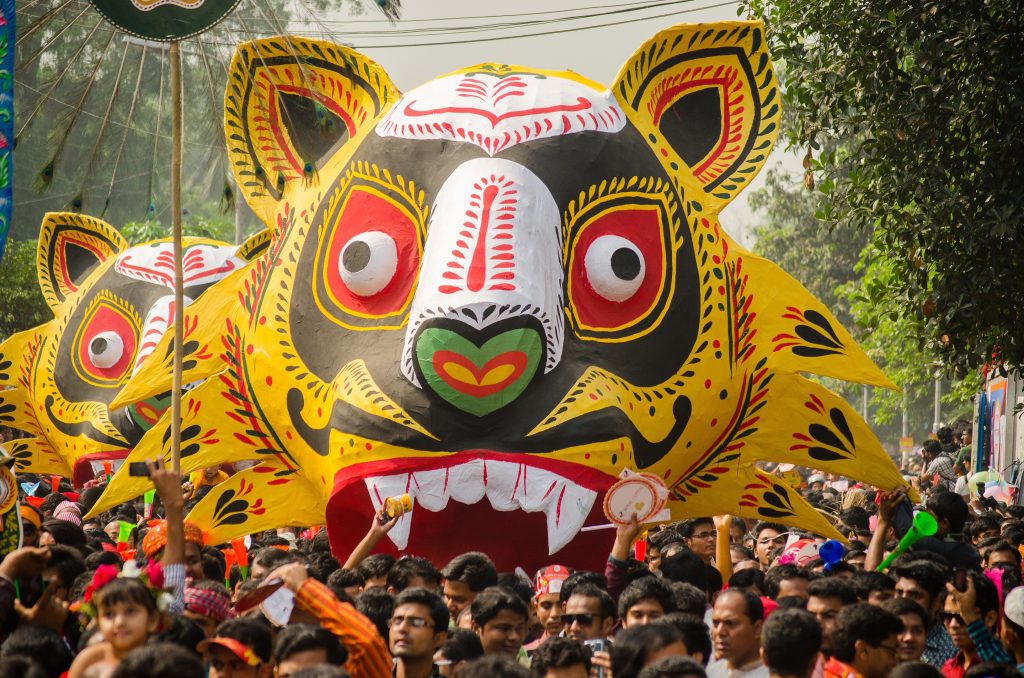
Preserving Heritage Through Algorithms
Bengali culture is deeply rooted in its oral histories, music, literature, and art. But much of this cultural wealth has been vulnerable to decay and loss. Enter AI. Universities and cultural organizations across Bangladesh and West Bengal have started using machine learning models to digitize and categorize ancient manuscripts, songs, and folk tales.
Projects like “Bot-tola,” a digital archive initiative, are using Natural Language Processing (NLP) to transcribe handwritten Bangla texts and convert them into searchable digital databases. AI tools can now distinguish between old Bangla scripts and regional dialects, making it easier to archive thousands of documents that would have otherwise been lost to time.
AI-Generated Alpana and Baul Fusion
In an exciting fusion of art and technology, generative AI tools like Midjourney and DALL-E are being trained on traditional Bengali art forms like alpana and naksha. Artists are collaborating with developers to generate contemporary designs inspired by centuries-old motifs, now displayed digitally at Pohela Boishakh fairs in Dhaka and Kolkata.
Meanwhile, musicians are using AI to blend Baul folk tunes with modern instruments, creating a unique genre that resonates with younger generations while respecting the soul of traditional music.
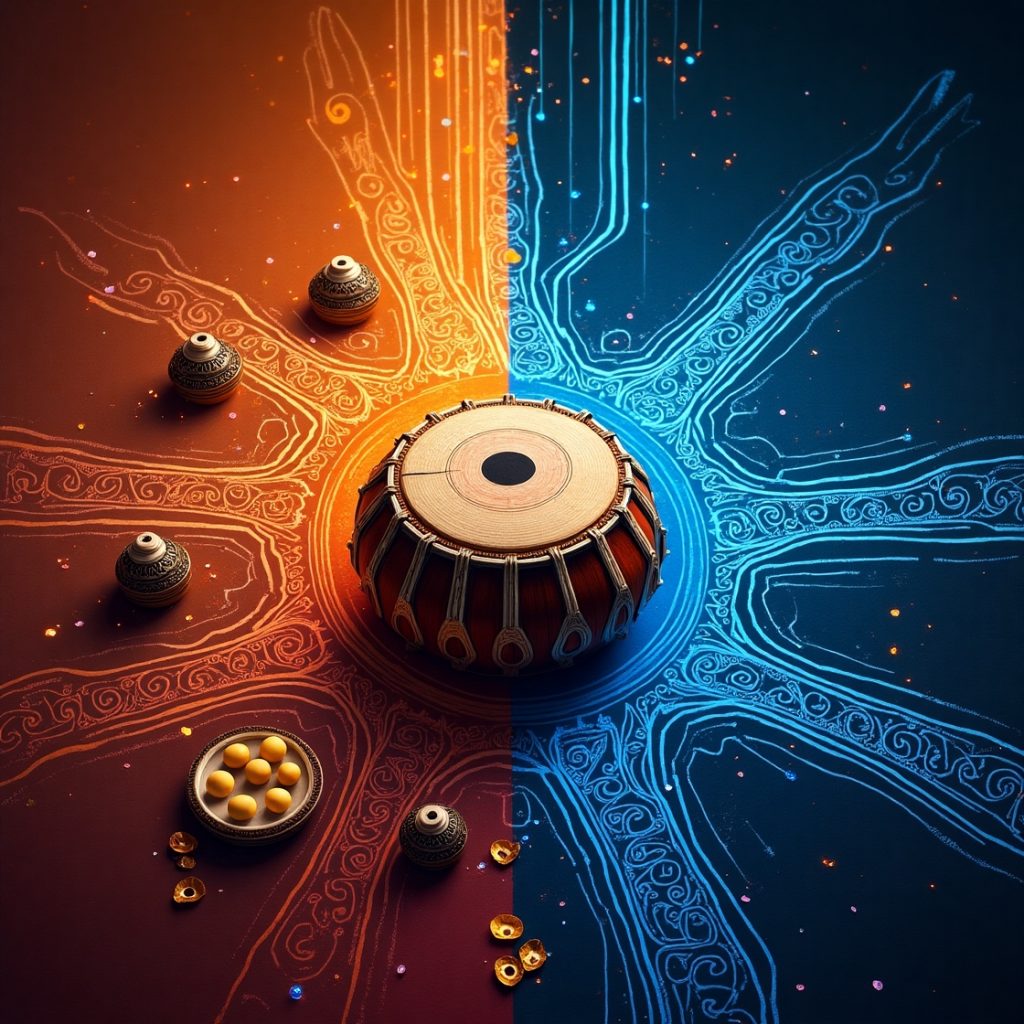
Virtual Celebrations, Real Connections
With the global Bengali diaspora in mind, virtual reality (VR) and AI-powered experiences are bringing Pohela Boishakh to those who can’t be home. Platforms like “BoishakhVerse” allow users to walk through a digitally recreated Dhaka University campus or Ramna Botomul using VR headsets, complete with ambient street sounds and live-streamed cultural performances.
AI recommendation engines personalize the experience, suggesting performances, recipes, and literature based on the user’s preferences and cultural background.
Smart Fashion for a Smart Boishakh
Fashion tech startups are harnessing AI to design festive outfits that marry traditional aesthetics with modern flair. By analyzing historical patterns and customer preferences, AI systems are creating Panjabi and saree designs with automated embroidery suggestions based on trending motifs for the season.
Shoppers can use augmented reality (AR) apps to virtually try on outfits before purchasing them online. A special Boishakhi capsule collection by a Dhaka-based fashion label sold out within hours, largely due to AI-driven personalization.
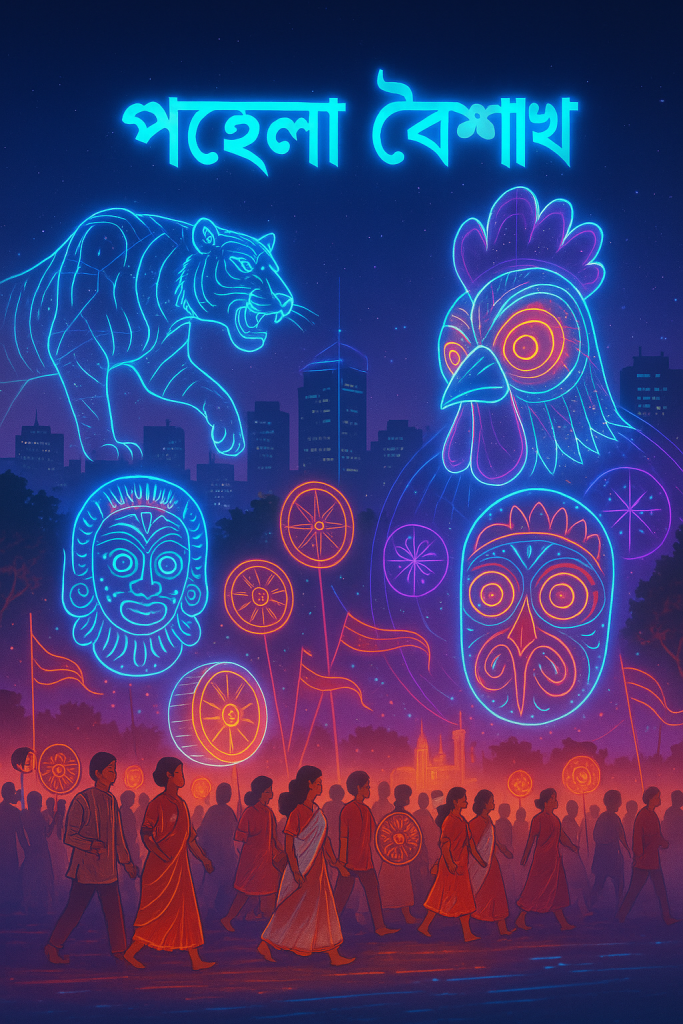
AI and the Language of Celebration
Language remains central to Pohela Boishakh. From lyrical poems to heartfelt wishes, Bangla is the soul of this celebration. AI models like Google’s Gemini and Meta’s SeamlessM4T are becoming more adept at handling Bangla text and speech. These systems now provide real-time translation, speech-to-text capabilities, and even AI-generated poetry in Bangla.
Chatbots developed for the season, such as “ShubhoBot,” send personalized New Year messages in traditional poetic formats and can even generate original couplets based on a user’s name or mood.
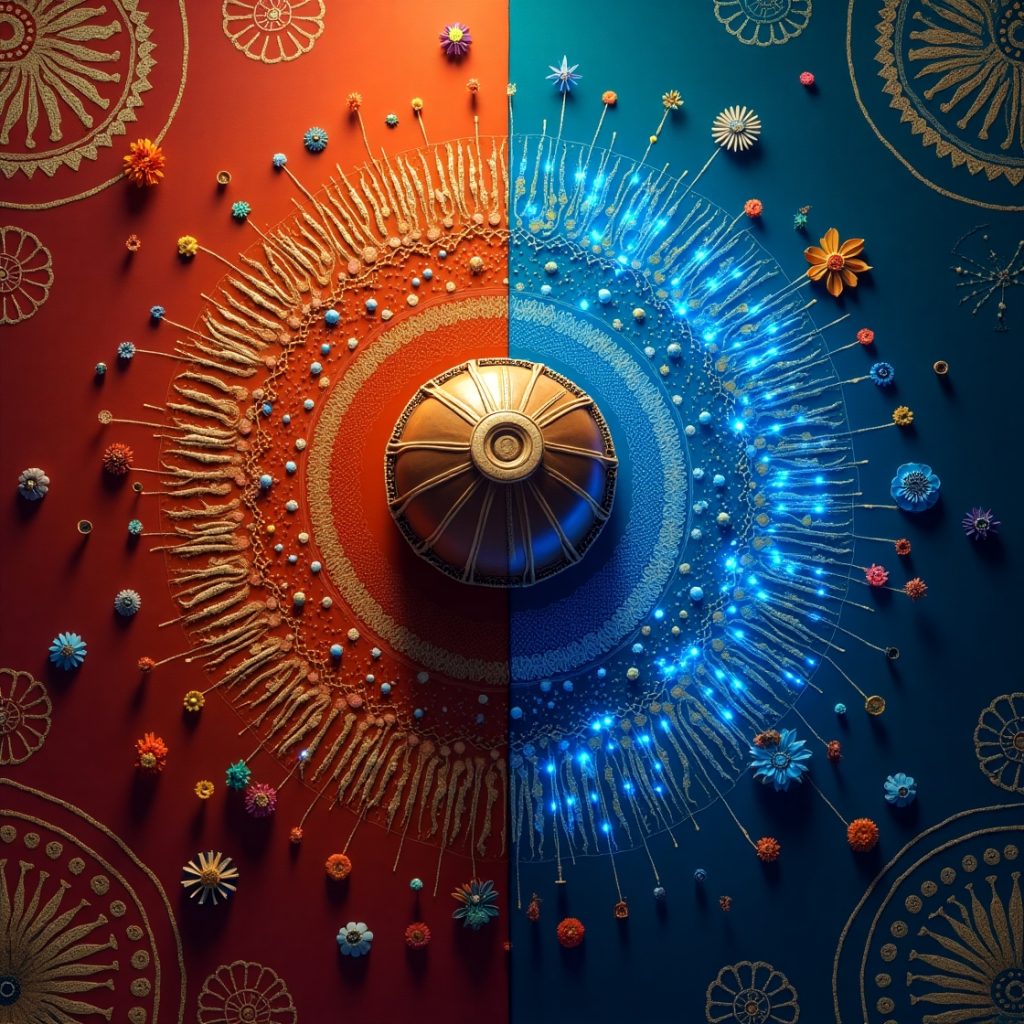
AI in the Kitchen: Redefining Tradition
Pohela Boishakh is incomplete without panta ilish, shorshe ilish, and a variety of sweets. AI-powered recipe assistants are now helping both novice and seasoned cooks prepare these delicacies. Apps like “RannaAI” can recommend ingredients based on what’s available in your kitchen and adjust recipes for dietary needs, such as diabetes or low sodium.
There are even features to generate fusion dishes—imagine ilish tacos or mango doi smoothies—as a playful twist on tradition.
Ethical Considerations: Balancing Innovation and Identity
While the potential of AI is vast, concerns around cultural dilution and data privacy linger. Is AI-generated alpana still alpana? Can a robot understand the soul of Tagore? These questions are sparking important debates among scholars, technologists, and artists.
Cultural AI projects are now being guided by advisory boards comprising historians, linguists, and community leaders to ensure authenticity and sensitivity. Data collected from users is anonymized and often localized to avoid exploitation by global tech giants.
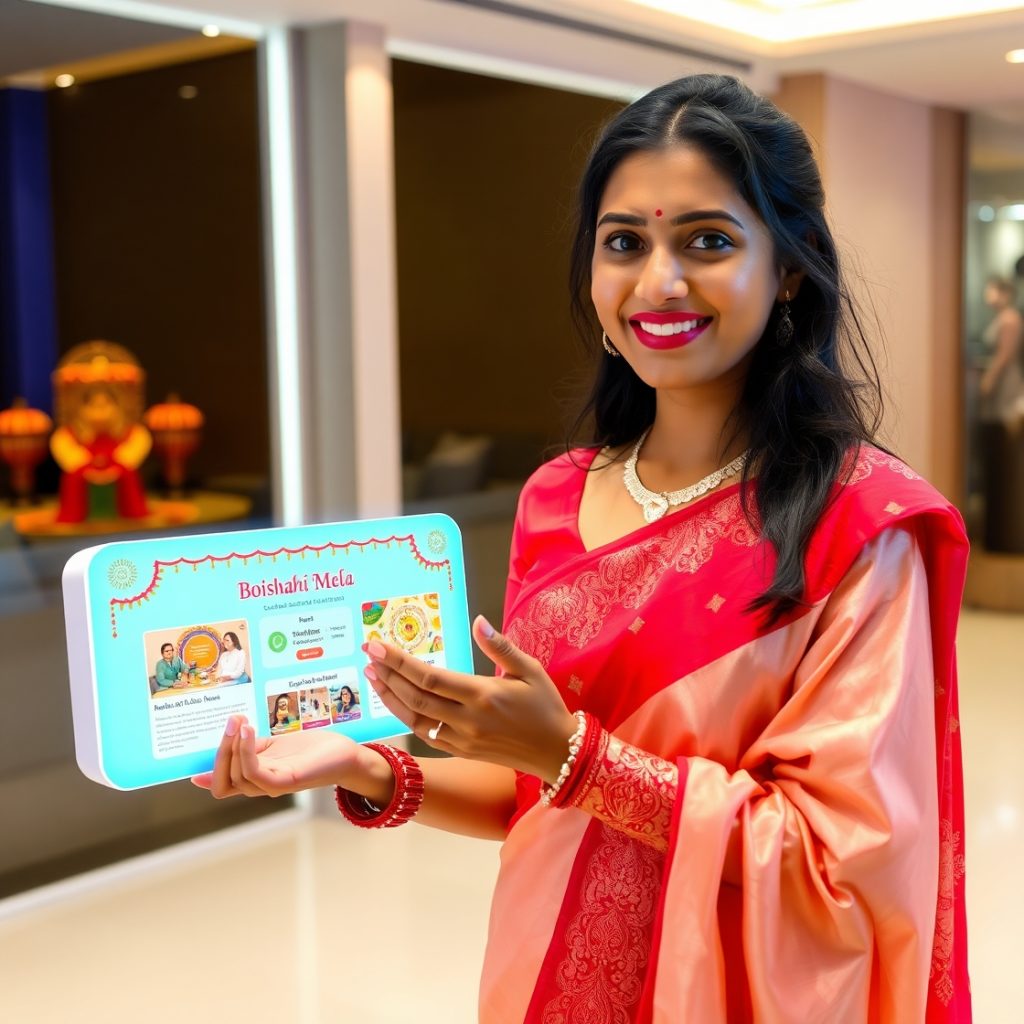
Education and Accessibility
One of the unsung benefits of AI this Boishakh is accessibility. Children in rural areas are using AI-powered learning platforms with voice-activated Bangla support to learn about the significance of the festival. Visually impaired individuals are enjoying AI-narrated renditions of Tagore songs and Boishakhi stories.
Local TV channels and online platforms are also using AI tools to subtitle performances and plays in real-time, making cultural programming more inclusive than ever.
The Road Ahead: Tradition in a Digital Mirror
What we are witnessing is not a replacement of tradition but its renaissance through AI. Pohela Boishakh in the AI age is a hybrid of nostalgia and novelty. It’s a celebration that remembers the past while stepping boldly into the future.
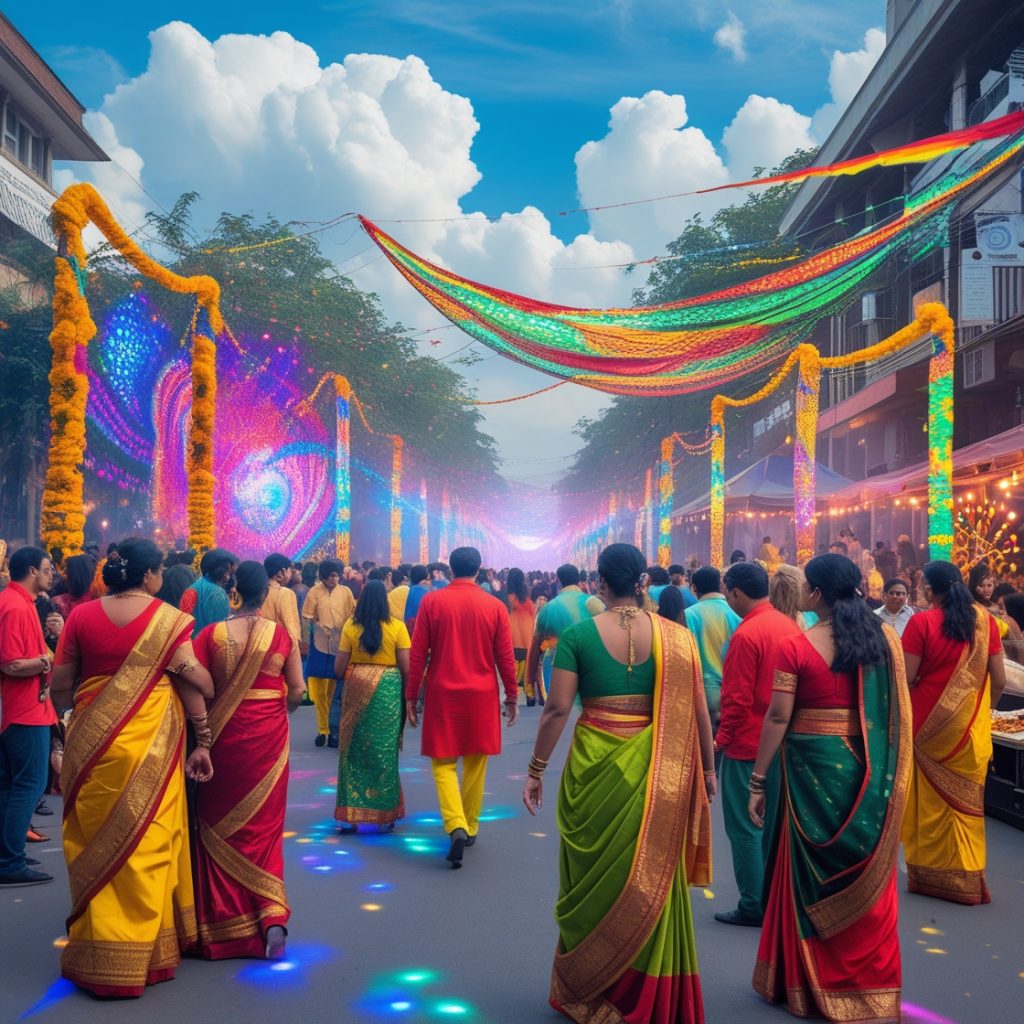
As red and white continue to symbolize renewal, perhaps blue neon and digital motifs will soon join the palette—not as competitors, but as companions. This New Year, let AI be not just a tool, but a bridge between generations, continents, and times.
Shubho Noboborsho—from both heart and hard drive.



